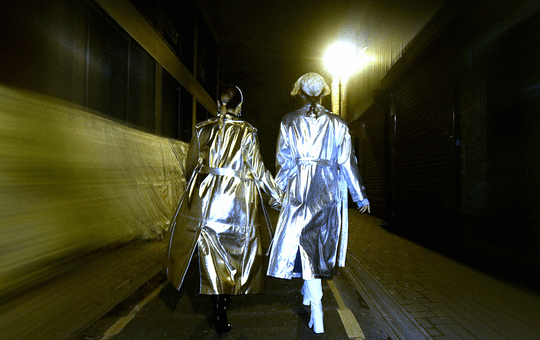A Love Letter to Wendy Carlos
Wendy Carlos was born twice: first, as a baby boy, in Pawtucket, Rhode Island in November of 1939; and then again, as a woman, in an operating theatre in New York, 1972. Before she was Wendy she was Walter: science wiz, composer, accomplice of Robert Moog and one of electronic music’s great pioneers. Moog wanted to produce an instrument, “as expressive as the piano, an instrument that grew out of what had gone before, much as the piano grew out of the clavichord.” Carlos – a music and physics student with a master’s degree in composition from Columbia University – helped him build it. From the piano came the synthesizer. Carlos would lead a life full of transformation. This was just the first.
In 1968, Walter, along with long term collaborator and producer Rachel Elkind recorded ‘Switched-On Bach’, an album of electronic classical covers which propelled the Moog synthesizer into the public consciousness and won three Grammy Awards. It sold over a million copies. Carlos and Elkind recorded more albums and soon found themselves flying to London at a day’s notice to create music for Stanley Kubrick’s A Clockwork Orange. Later Carlos would create music for The Shining, and a groundbreaking score for Disney’s 1982 film, Tron. Carlos blended symphonic orchestras with synthesizers; the old world and the new. These tensions existed within Carlos too: art and science, male and female, old and new.
Carlos had been living as a woman for three and a half years prior to the operation that changed her life in 1972, only making occasional appearances as a man for the sake of her career. She once played a concert with pasted on fake sideburns and make up that imitated five o’clock shadow. During these years she disappeared from view and diversified her interests: building a computer, drawing, becoming a member of a club that chased eclipses. On Valentine’s Day in 1979 she changed her name to Wendy, and later that year reintroduced herself to the world in a frank and fascinating interview with Playboy. “I don’t feel it’s been positive at all,” she said of her operation. “I feel that what I achieved is the removal of one very large negative in my life. Now that I’ve solved my gender crisis, I’ve still got to come to grips with the other parts of life that go into making a happy individual… having the time to create and shape the multifaceted diamond that a fine life can be.”
Just like ice, lives crack too. Personalities. Identities. Carlos has lived a life full of cracks but from the shards has built her own diamond. It’s hard to imagine how different the world of music would be without her work. Because of Carlos we have Stevie Wonder’s electric soul odysseys, Brian Eno’s experiments in ambience, Kraftwerk’s Teutonic pop and everything that followed them: from post-punk to house music, hip-hop and techno. Back in the early 70s Carlos began using a military device called the Vocoder as a musical effect, so even Big Boi’s Shutterbug and James Blake’s Footnotes carry her genes. Now seventy years-old, Carlos’s vast website catalogues an eccentric life of questing inquiry: a beautiful collection of solar eclipse photos, a series of essays exploring the way we see colour, a dissection of microtonality, some cool drawings of cats.
In a 1983 Keyboard magazine profile of Carlos, Robert Moog describes a lecture Carlos gave to a packed house at an Audio Engineering Society meeting. At the end of her talk she said there are only two kinds of science – physics and butterfly collecting. “I am a butterfly collector,” she concluded. “I have just shown you some of my favourite butterflies.”
With thanks to Jeffery Eugenides whose novel Middlesex is paraphrased liberally throughout this letter.
+Scott Wright runs the Pinglewood blog.+













